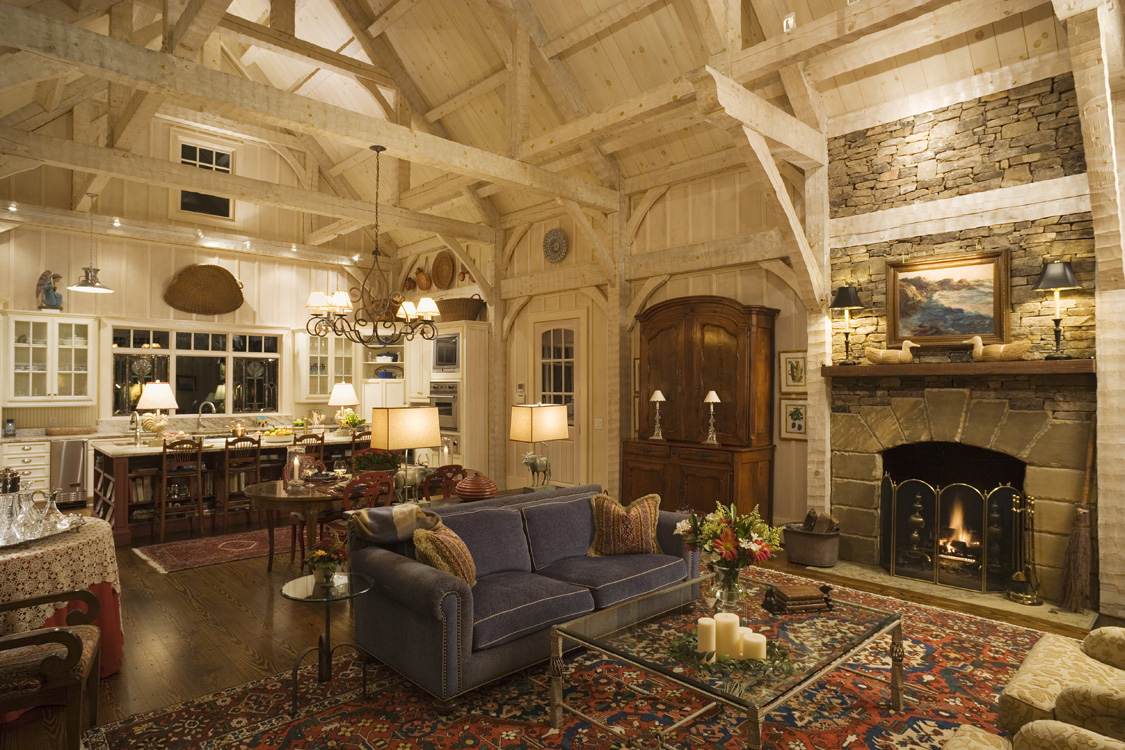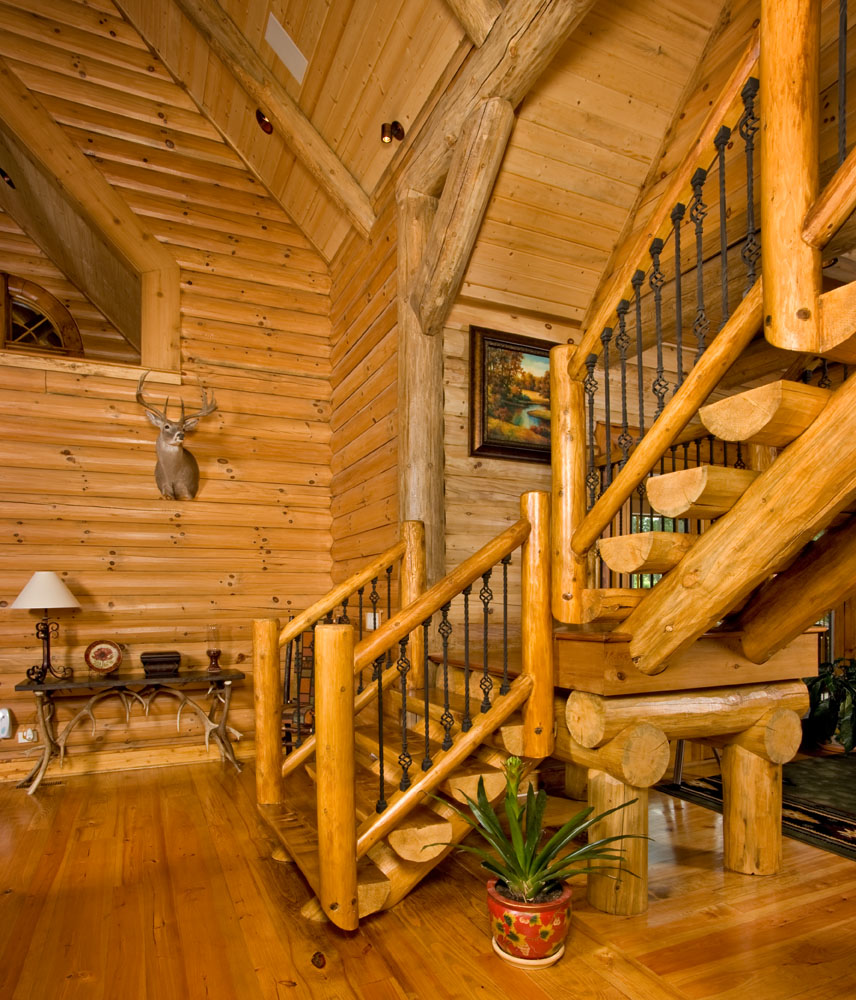Since interior finishes are not exposed to rain, snow, wind and direct sunlight, long term resistance to weather is not an issue and you have more flexibility when choosing the color and appearance of your interior wood surfaces. However, there are some parameters that need to be followed to assure you obtain the benefits of an interior finish such as preventing odor absorption and making the walls easy to keep clean while getting the look you desire as well.
 Why apply color?
Why apply color?
The first question to consider is do you want to apply a color to your wood surfaces, or do you want to retain the wood's natural color? One reason for adding a color is to even out the overall color of the walls. Even if only one species of wood is used for interior surfaces there may be slight color differences from log to log that disrupt the uniformity of a wall.A colored stain will help diminish these differences.
Another reason for applying a color is that over time sunlight coming in through the windows may darken exposed surfaces. There are ways to slow this process even on unstained surfaces, but the application of a pigmented stain will slow this process even more.
How many color coats do you need to apply if you have decided to add a bit of color?
As opposed to exterior surfaces it's more a matter of obtaining the color you want than being concerned about long term performance. If one coat works, that's all you'll need. If after two coats you want your walls a bit darker, there is no problem applying a third coat. One thing we do recommend when applying a color to bare wood is to add a dose of UV Boost to the first coat of stain. It helps make the wood UV stable and further reduces the “picture frame” effect on areas that are protected from exposure. Since it only works when applied to bare wood it does no good to add it to subsequent coats.
 What if you decide not to apply a colored stain to your walls?
What if you decide not to apply a colored stain to your walls?
In this case we recommend that the bare wood be first primed with Prelude Clear Water-Based Wood Primer. Prelude seals the wood surface, so you'll use less Acrylic or Sure Shine Gloss or Satin and since it already contains UV Boost it adds UV protection to the wood.
If you have applied LIFELINE Interior stain or Prelude, do you still need to apply a clear topcoat?
Yes, the formulation of LIFELINE Interior, Accents and Prelude is designed for flexibility and excellent adhesion to wood but the polymers we use to attain these attributes are slightly soft and dust and dirt can adhere to them. When topcoated with Acrylic Gloss or Satin or Sure Shine the finish surfaces become much more impervious to dirt pick-up and since they are slick and smooth they can be kept clean with much less effort. The bottom line is that the application of Lifeline Interior, Lifeline Accents or Prelude should always include applying either Acrylic Gloss or Satin or Sure Shine over them.
Equipment to Have on Hand
Ladders, ladder jacks and platform, if necessary.
Electric Drill.
Paint mixer (available from Perma-Chink Systems or most paint stores and DIY outlets).
High quality paint or stain brushes (this is not an area to cut costs).
Clean rags and sponge.
